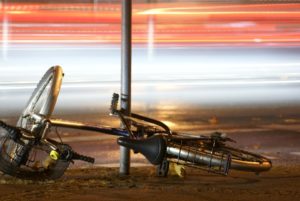Motorcycle Accident In New York City Often Leads To Road Rash And Skin Infections

- 1. Parts of the body most often damaged due to road rash
- 2. What are the three basic levels of road rash requiring treatment?
- 3. The basic treatment is usually necessary or recommended for each degree of road rash
- 4. Observing better safety precautions can minimize your chances of developing road rash
- 5. Which motorcycle riding habits (or specific events) often lead to skin abrasions?
Daily accidents cause countless bicyclists, skateboarders, runners, pedestrians, and passengers ejected from vehicles to develop different levels of road rash. However, motorcyclists traveling at moderate to high speeds are usually the ones who suffer the most damaging and painful forms of this type of skin abrasion or “friction burn.”

When only the top layer of the skin (the epidermis) is involved, the wounds will normally only require thorough cleaning and removal of all foreign substances from the exposed skin. However, when deeper levels of skin are damaged, immediate medical treatment is crucial. Chances are, if you have a serious road rash, you are also probably battling traumatic brain injuries, broken bones – or possibly even some type of spinal cord trauma.
The additional information below addresses such topics as the three levels of road rash, the different ways each rash must be treated, and some general safety guidelines that can help all New York City motorcyclists minimize their chances of developing any future road rash.
Parts of the body most often damaged due to road rash
- Hands
- Legs
- Knees
- Arms/Elbows
- Face – if the helmet came off — or if you were not wearing one
Permanent scarring can occur if you don’t obtain the best medical treatment possible after all moderate to severe road rash injuries – and even some “lesser” skin abrasions.
What are the three basic levels of road rash requiring treatment?
There are some very general parallels between the ranking of burn injuries and road rash abrasions.
- First-degree road rash. As might be guessed, many people who incur this level of road rash can sometimes handle the treatment on their own. However, it’s always best to go see your treating physician or nurse practitioner, immediately after this type of injury, especially if you did not visit an emergency room right after your motorcycle road rash accident – or your Brooklyn motor vehicle accident. You’ll know you’ve probably just developed a first-degree road rash when only the surface level of the skin has been affected and the damaged area just looks like you “scraped” it. Because of the color of this rash, some people refer to your wound as looking like a “strawberry” or a “raspberry.” (The best treatment options for this degree of road rash will be discussed below, along with the proper care for second-and third-degree road rash).
- Third-degree road rash. Sadly, some have said that this level of road rash can be extremely painful. When you have suffered this type of rash, the second layer of your skin – the dermis – has also been torn or broken. Tissue, fat, and bone may be visible. Immediate care is crucial. If you do not treat this promptly, there is a small but distinct chance that the untreated wound could cause your death.
The basic treatment is usually necessary or recommended for each degree of road rash
- First-degree road rash. Although seeing a healthcare professional is always wise, especially when this injury developed during a Bronx motorcycle accident or motor vehicle collision, it can sometimes be handled at home. If you decide to treat it yourself, must wash your hands before trying to clean the wound area. You must then gently wash the injured area with soap. However, you should never rub the skin area hard as this can worsen the injury and even cause bleeding. The hardest part of handling this care is that you must remove any gravel or other debris that may still be caught in the wound, even if the skin hasn’t been torn yet.
Also, the wound must be properly bandaged, after applying antibiotic ointment. And you must keep checking to be sure there isn’t any pus or infectious material coming from the wound. Always consider letting a healthcare professional clean this type of wound since this will greatly minimize all chances of permanent scarring.
- Third-degree road rash. Skin grafting or a skin transplant may be required to help heal this extremely serious level of road rash. Often, the skin used for this type of surgery must be taken from your body – from the thigh area, your buttocks, or your back. While it may only take two weeks for your body to heal from where the grafted skin was removed, the actual road rash wound area may take much longer to heal. Your doctor will likely prescribe pain medication for you – such as Advil or Tylenol.
Observing better safety precautions can minimize your chances of developing road rash
Most of the tips shared here involve wearing the best protective clothing and gear you can afford while riding a motorcycle. Despite the carefree fun tied to riding a motorcycle, those who survive accidents on these vehicles will tell you that they wish they had been more practical and worn better protective gear – every month of the year, no matter how short the ride.
To fully protect your body, be sure to purchase – and always wear – each of the following types of motorcycle gear.
- Sturdy boots. All motorcycle riders should buy the best-made boots for riding “bikes” that they can afford. Too many people assume that they’re great riding skills will protect them – yet your safety always depends on which of the worst drivers imaginable are traveling next to you on the road. As some have said in the past, the boots you wear will likely determine whether your future travel will occur on crutches or on a motorcycle. Some riders like to buy well-made motorcycle suits and boots, although no specific brand or combination can always keep you safe.
- Motorcycle gloves. You can find a good pair that will allow you all the flexibility and safety you need. When you fail to wear gloves on your bike, you could be destroying your future chances of holding down a job – should you be in a serious or catastrophic degloving motorcycle accident that severely damages one or both hands.
- Thick or sturdy jackets, shirts, and slacks. These must be worn – all year round. You can still fully enjoy the spring or summer air while riding on your motorcycle – without wearing shorts or a flimsy shirt or T-shirt. Always consider wearing a light jacket as well since your body can always use the added protection – should you go sliding across the asphalt after a drunk driver hits you. In fact, some leather jackets can help save your life – or prevent extremely painful road rash.
Which motorcycle riding habits (or specific events) often lead to skin abrasions?
- The speed at which you normally travel.
Obviously, the faster you choose to ride your motorcycle, the more likely you are to have a dangerous accident that will cause moderate to severe (and possibly even deadly) road rash. - The distance you wind up sliding across the asphalt or another rough surface.
- The type of weather that’s present during your accident.
If the roadways are wet or icy, chances are you may wind up sliding — at least part of the way — across some gravel or other rough surfaces before skidding to a stop. - The actual speed at which your skin slides across the rough surface you land upon.
- The precise nature, texture, hardness, or surface of the road that you slide across.
- The amount of protective gear that you were wearing when your accident unfolded.
- Whether or not you were carrying a proper first aid kit that allowed you to immediately clean minor flesh wounds.
- How soon you become conscious after your accident.
If you are going to be riding in a remote area, always be sure to tell at least one friend or family member exactly where you might be traveling on any given day. That way, if you do not reach your destination because you were in a terrible accident, someone can more readily find you. Never forget, that no one can predict how many bad, careless, or drunk drivers may be out sharing the roads with you when you are riding your motorcycle all alone.
If you have suffered serious bodily injuries after a Brooklyn motorcycle accident caused by someone else’s negligence, you need to contact our New York City motorcycle road rash accident law firm. We will carefully investigate all the facts of your case, review all your medical records, and then fight hard to win the maximum compensation available to you. We want every client to fully recover for all lost wages, pain and suffering, medical expenses, and other losses.






